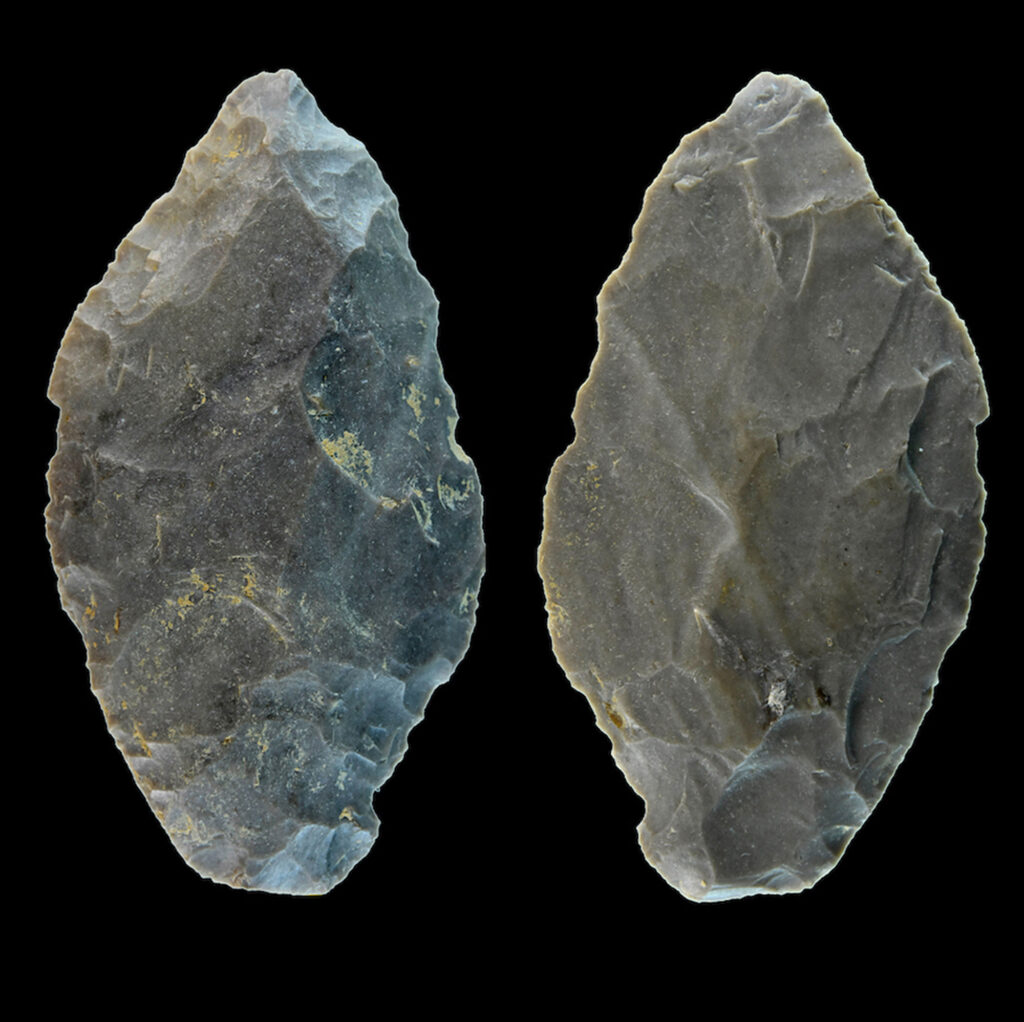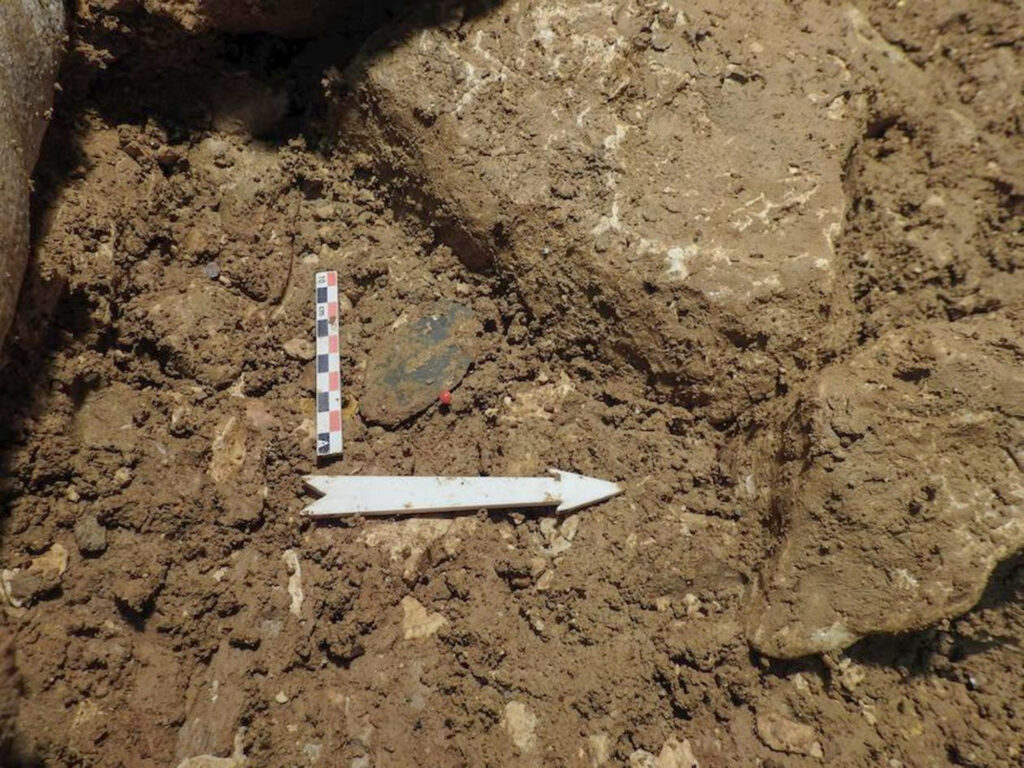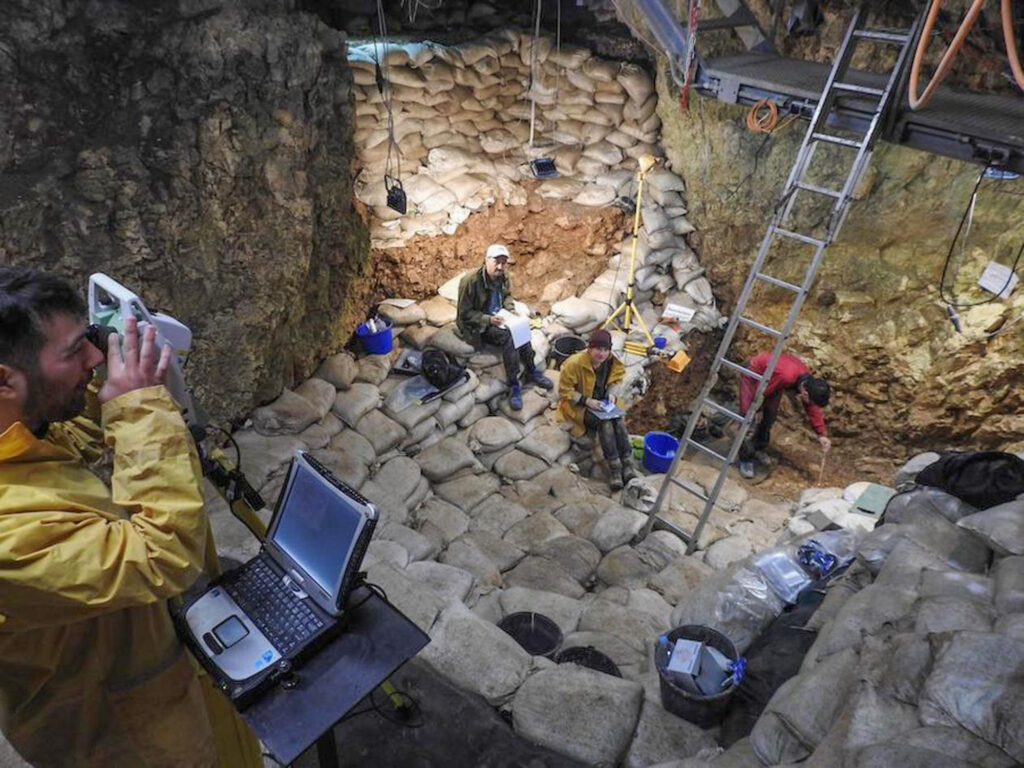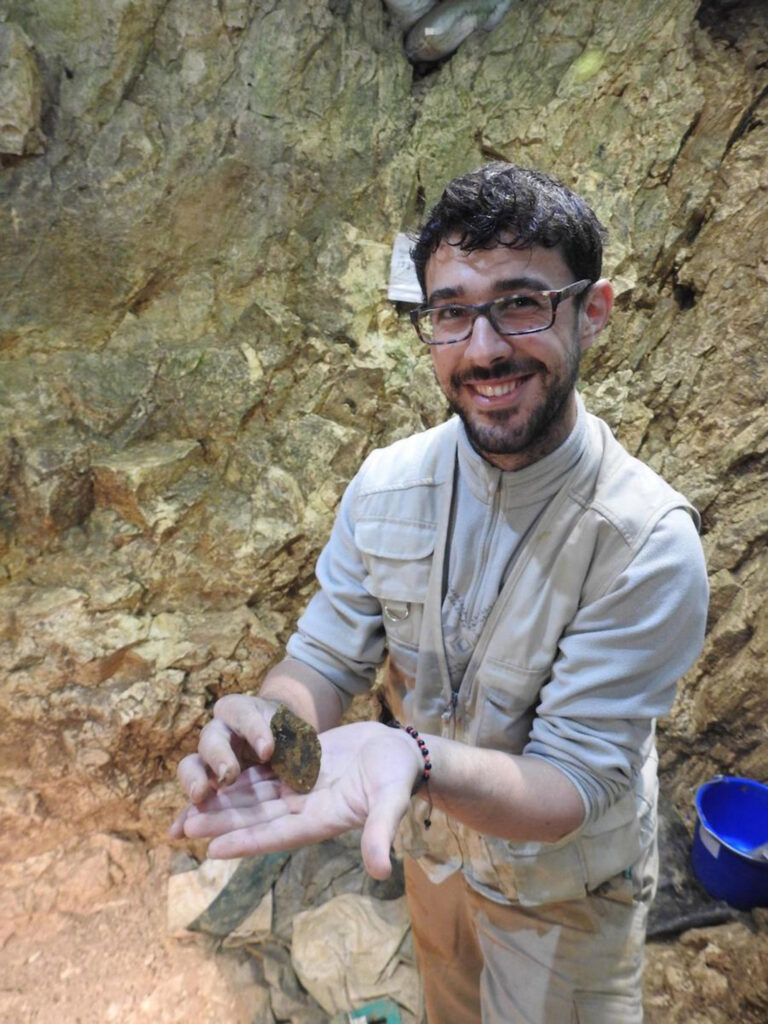65,000 Year Old Spear Tip Found In Germany Reveals Neanderthal Hunting
A leaf point stone tool which is believed to be at least 65,000 years old was recently discovered in a German cave giving scientists the chance to extract it using modern technology offering clues to prehistoric hunting techniques.
The Museum of Prehistory in the German town of Blaubeuren presented the “Find of the Year” and put on display the stone leaf point from the University of Tubingen’s excavation at the UNESCO World Heritage site Hohle Fels Cave located in Germany.
According to a statement from the university, the hafted leaf-shaped stone point dates back to at least 65,000 years ago and was used by the Neanderthals from the Swabian Jura to hunt horses and reindeer.

The Hohle Fels Cave located in the town of Schelklingen in the German state of Baden-Wurttemberg has yielded a number of important archaeological finds dating from the Upper Palaeolithic through the years.
The current artefact was uncovered by a research team led by Professor Nicholas Conard for the University of Tubingen and the Senckenberg Centre for Human Evolution and Palaeoenvironment in southern Germany.
Conard said: “The new discovery represents the first time a leaf point has been recovered from a modern excavation, allowing researchers to study the fresh find with state-of-the-art methods. Оur results document how the tool was made, used and why it was discarded.”

The scientist explained that the artifact, which is the oldest of such kind to have ever been discovered in the cave, is 7.6 centimetres (2.9 inches) long, 4.1 centimetres (1.6 inches) wide, 0.9 centimetres (0.3 inches) thick and weighs a total of 28 grammes (0.9 ounces).
Conard said that the leaf point belongs to the last cultural phase of the Neanderthals in Central Europe and added: “The new results demonstrate that our assumptions about the dating of the cultural groups of the late Neanderthals were wrong and need revision.”
Dr Veerle Rots from the University of Liege in Belgium conducted a detailed microscopic analysis that appeared in two open access journals.

According to Rots, damage spotted at the tool’s tip indicated that the artifact was used as a hafted spear point, and that the spear was likely thrust into prey rather than being thrown.
The scientist said: “Neanderthals were expert stone knappers and knew exactly how to make and use complex technologies combining multiple parts and materials to produce and maintain deadly weapons.”
Rots added that during the Homo heidelbergensis era, man’s ancestors used sharpened wooden spears for hunting, but these spears lacked mounted stone points like those used by Neanderthals.

The leaf point from Hohle Fels Cave will be on display at the “Find of the Year” at the Museum of Prehistory in Blaubeuren from 22nd July until January 2022.
Director of the Museum of Prehistory Dr. Stefanie Kolbl said: “Hohle Fels is a remarkable site where after 25 years of excavation by the current team, spectacular discoveries from the period of the Neanderthals and early modern humans are still being made.”



